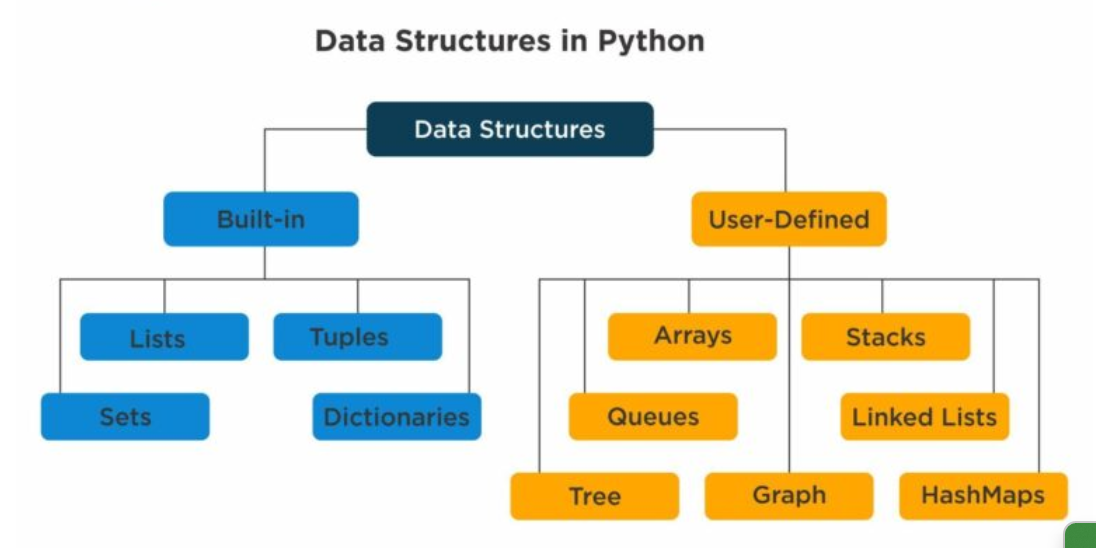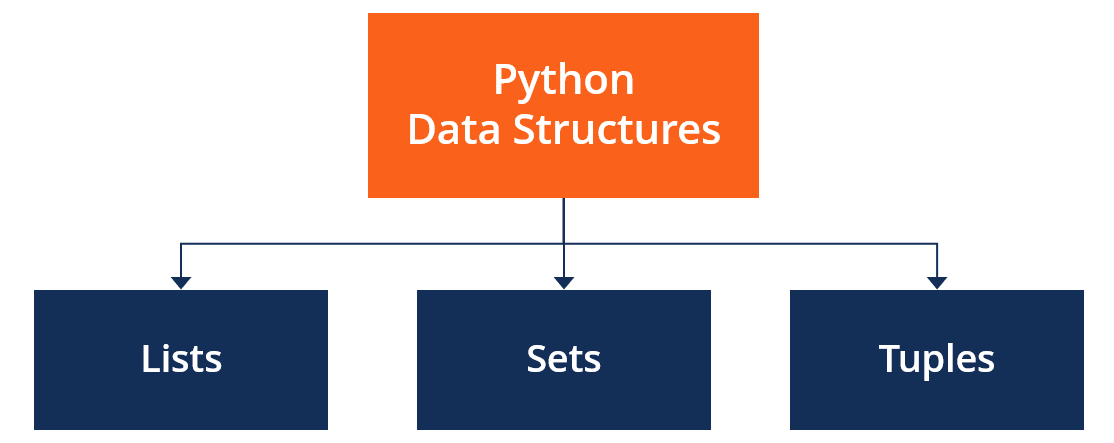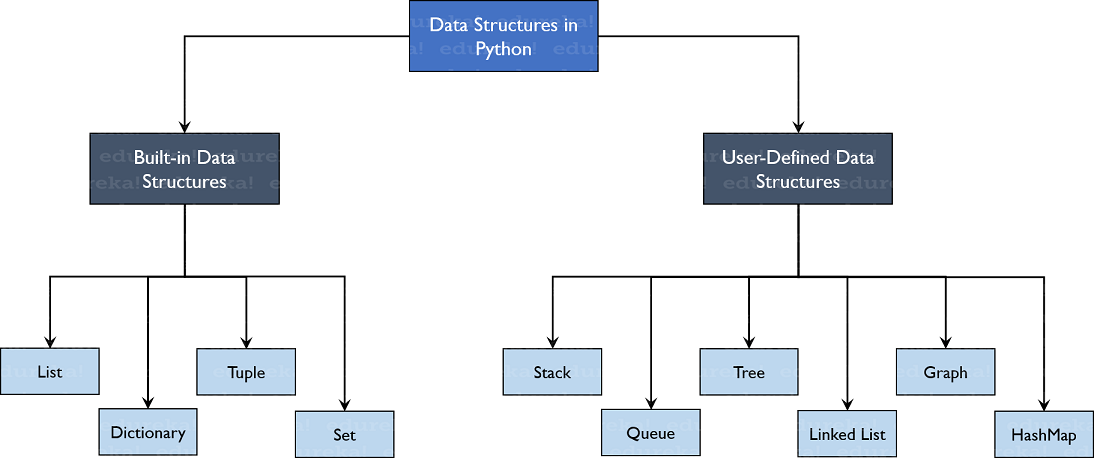Data structures in Python
Data structures in Python

I'll respond in English this time!
Data Structures in Python

Python is a popular programming language known for its simplicity and ease of use. One of the key aspects of Python's power is its extensive range of data structures, which allow you to efficiently store and manipulate complex sets of data. In this article, we'll explore some of the most common and useful data structures in Python.

1. Lists
Lists are one-dimensional arrays that can be used to store a collection of items. They're denoted by square brackets [] and elements are separated by commas. Lists are dynamic, meaning they can grow or shrink as needed. Here's an example:
fruits = ['apple', 'banana', 'cherry']
print(fruits[0]) # prints "apple"

2. Tuples
Tuples are similar to lists but are immutable (can't be changed once created). They're denoted by parentheses () and elements are separated by commas. Tuples are useful when you need a read-only collection of items:
colors = ('red', 'green', 'blue')
print(colors[1]) # prints "green"
3. Dictionaries
Dictionaries (also known as hash maps or associative arrays) store key-value pairs, where each key is unique and maps to a specific value. They're denoted by curly braces {}:
person = {'name': 'John', 'age': 30}
print(person['name']) # prints "John"
4. Sets
Sets are unordered collections of unique elements. They're useful for storing a group of items without duplicates:
numbers = {1, 2, 3, 4, 5}
print(len(numbers)) # prints 5
5. Stack and Queue Implementations using Lists
Python doesn't have built-in stack or queue data structures, but you can implement them using lists:
class Stack:
def init(self):
self.stack = []
def push(self, item):
self.stack.append(item)
def pop(self):
return self.stack.pop()
stack = Stack()
stack.push('apple')
stack.push('banana')
print(stack.pop()) # prints "banana"
6. Graph Implementations using Dictionaries and Sets
Python doesn't have built-in graph data structures, but you can implement them using dictionaries and sets:
class Graph:
def init(self):
self.graph = {}
def add_edge(self, node1, node2):
if node1 not in self.graph:
self.graph[node1] = set()
self.graph[node1].add(node2)
def get_edges(self, node):
return list(self.graph.get(node, set()))
graph = Graph()
graph.add_edge('A', 'B')
graph.add_edge('A', 'C')
print(graph.get_edges('A')) # prints ['B', 'C']
These are just a few examples of the many data structures you can use in Python. Each has its own strengths and weaknesses, and understanding when to use each will help you write more efficient and effective code.
Conclusion
Python's built-in data structures make it easy to work with complex sets of data. By mastering these fundamental concepts, you'll be well-equipped to tackle a wide range of programming tasks. Whether you're working on algorithms, data analysis, or web development, Python's data structures are an essential part of any programmer's toolkit!
Data structures and Algorithms in Python
I'll respond in English as per your request.
Data Structures in Python
Python provides a variety of built-in data structures that can be used to store and manipulate data. Some common data structures include:
Lists: Lists are a type of sequence data structure that allows you to store multiple items in a single variable. You can think of lists like arrays, but they are more powerful and flexible.Example: my_list = [1, 2, 3, 4, 5]
Example: my_tuple = (1, 2, 3, 4, 5)
Example: my_dict = {'name': 'John', 'age': 30}
Example: my_set = {1, 2, 3, 4, 5}
Algorithms in Python
Python provides a variety of built-in algorithms that can be used to solve problems. Some common algorithms include:
Sorting: Sorting is the process of arranging data in alphabetical or numerical order.Example: my_list = [4, 2, 9, 6, 23, 12, 34, 0]
Sorted list: sorted(my_list) -> [0, 2, 4, 6, 9, 12, 23, 34]
Example: my_list = [1, 2, 3, 4, 5]
Search for item 3: if 3 in my_list: print("Item found!") -> "Item found!"
Example: graph = {'A': ['B', 'C'], 'B': ['A', 'D'], 'C': ['A', 'F'], 'D': ['B'], 'E': ['F', 'D'], 'F': ['C', 'E']}
Shortest path from A to F: from collections import deque; queue = deque([('A', [0])]); while queue: (v, path) = queue.popleft(); for next in graph.get(v, []): if not next in path: queue.append((next, path + [next])); print(path[-1][-1]) -> ['A', 'B', 'D', 'E', 'F']
These are just a few examples of the many data structures and algorithms that Python provides. By mastering these fundamental concepts, you can write more efficient and effective code.
References:
https://www.datacamp.com/courses/intermediate-python-with-pandas-and-matplotlib
https://www.tutorialspoint.com/python/index.htm




























